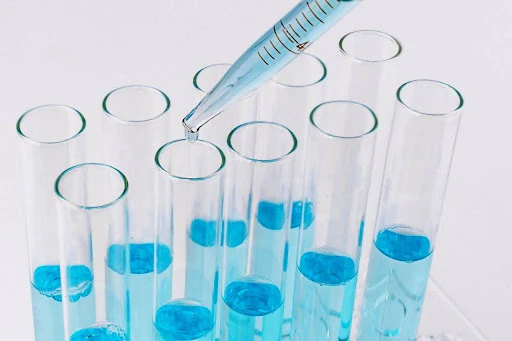Hydrogen water is quickly gaining popularity for its potential health benefits, from boosting energy to reducing oxidative stress. But not all hydrogen water is created equal. One of the most important factors that determine its effectiveness is the concentration of dissolved hydrogen gas (H₂) in the water.
Whether you’re using a hydrogen water machine, tablets, or purchasing pre-bottled hydrogen water, it’s essential to test the hydrogen concentration to ensure you’re actually getting the therapeutic dose.
In this article, we’ll explain why testing is important, how to do it properly, and what tools you can use to measure the concentration of hydrogen in your water.
Why Hydrogen Concentration Matters
The benefits of hydrogen water depend on molecular hydrogen (H₂) being present in sufficient quantities. The concentration of hydrogen is typically measured in:
- Parts per million (ppm)
- Milligrams per liter (mg/L) – equivalent to ppm in water
Studies suggest that a concentration of at least 0.5 ppm is necessary to produce potential health benefits, while levels between 1.0 and 1.6 ppm or more are ideal.
If your hydrogen water has low or no hydrogen content, you’re not likely to experience any noticeable effects—no matter how advanced your equipment or method.
How to Test Hydrogen Concentration in Hydrogen Water
There are several reliable methods to measure the amount of dissolved hydrogen in your water. Below are the most common tools and how to use them effectively.
1. Hydrogen Test Reagent Drops (Blue Drops Method)
This is one of the most accessible and widely used methods for home testing.
How It Works:
- A chemical reagent reacts with the hydrogen in the water, causing a color change.
- The number of drops required to cause a color shift is counted and correlated with ppm of dissolved hydrogen.
Steps:
- Fill a test vial with 6 ml of freshly prepared hydrogen water.
- Add drops of the reagent one at a time.
- Count the drops until the blue color disappears.
- Each drop typically represents 0.1 ppm, so 10 drops = 1.0 ppm.
Pros:
- Affordable and easy to use
- Great for quick, approximate readings
Cons:
- Not lab-accurate
- Subject to user interpretation and technique
2. Digital Dissolved Hydrogen Meters
These are handheld electronic devices that provide a digital reading of the hydrogen concentration.
How It Works:
- Insert the meter’s probe into the hydrogen water sample.
- Wait a few seconds for the reading to stabilize.
- The screen displays the hydrogen concentration in ppm.
Pros:
- Fast and fairly accurate
- Great for regular users and serious enthusiasts
Cons:
- More expensive
- Requires occasional calibration
3. Gas Chromatography (Lab Testing)
This is a scientific laboratory method used to test bottled or commercial hydrogen water products.
Pros:
- Extremely accurate
- Useful for manufacturers and researchers
Cons:
- Expensive and not practical for home use
- Requires lab equipment and expertise
Table: Comparison of Hydrogen Testing Methods
| Method | Accuracy | Ease of Use | Cost | Best For |
|---|---|---|---|---|
| Reagent Drop Test | Moderate | Easy | Low | Home users, beginners |
| Digital Hydrogen Meter | High | Moderate | Medium to High | Regular users, advanced users |
| Gas Chromatography (Lab) | Very High | Difficult | Very High | Manufacturers, researchers |
Best Practices for Accurate Testing
To ensure accurate results when testing your hydrogen water, follow these best practices:
1. Test Immediately
Hydrogen gas is highly volatile and escapes from water quickly. Always test right after preparing or opening your hydrogen water.
2. Use Clean Containers
Make sure the container or vial you use for testing is clean and free from contaminants that could interfere with the reaction.
3. Avoid Agitation
Shaking or pouring hydrogen water from one container to another can cause hydrogen gas to dissipate. Handle gently before and during testing.
4. Check Temperature
Hydrogen solubility can change with temperature. Water should be room temperature (around 20–25°C / 68–77°F) for the most consistent readings.
5. Seal and Use Quickly
If you’re using hydrogen-generating tablets or machines, consume or test the water within 15–30 minutes after preparation for the best results.
What Hydrogen Concentration Should You Aim For?
A concentration of 1.0 to 1.6 ppm is generally recommended to experience the reported benefits of hydrogen water. Some high-end machines or premium tablets may even produce water with up to 2.0 ppm or more.
Anything below 0.5 ppm is considered too low to have a therapeutic impact.
Understanding these numbers helps you evaluate the performance of your hydrogen water system or the quality of bottled hydrogen water products.
Keyword Context: Why It Matters
Understanding how to test hydrogen concentration also ties into the bigger picture of hydrogen water’s unique benefits. For example, many ask:
The answer lies not just in its chemical composition, but in measurable hydrogen concentration. Regular water doesn’t contain free molecular hydrogen. Hydrogen water does—and only when the hydrogen concentration is high enough does it start to provide the cellular and systemic benefits associated with antioxidant protection, improved metabolism, and energy support.
Frequently Asked Questions (FAQs)
Can I test bottled hydrogen water?
Yes, but it must be freshly opened. Hydrogen gas can escape through plastic or bottle seals over time. Test immediately after opening for best accuracy.
Are test drops accurate enough?
Test drops offer reasonable accuracy for home use, especially when used consistently. While not lab-level precise, they’re good for general monitoring of your water’s quality.
How long does hydrogen stay in water?
Hydrogen starts escaping immediately after being produced or bottled. In open air, it can dissipate in minutes. In a sealed container, it may last a few hours or up to a few days, depending on the material.
Can I test using a pH or ORP meter?
No. While some marketers claim oxidation-reduction potential (ORP) or pH meters reflect hydrogen levels, they do not accurately measure molecular hydrogen concentration.
Is more hydrogen always better?
To a point. While higher concentrations (1.6–2.0 ppm) may be more effective, extremely high levels may not offer significantly more benefit and may cost more. Focus on consistent quality over extreme numbers.
Final Thoughts
Testing the hydrogen concentration in your hydrogen water is essential if you want to ensure you’re getting real, effective results. Whether you’re using a home machine, tablets, or bottled options, knowing the ppm value of molecular hydrogen allows you to:
- Evaluate product performance
- Adjust your dosage or method
- Maximize potential health benefits
Simple test kits or digital meters make it easy to monitor hydrogen levels and verify that your water is doing more than just hydrating—it’s actively supporting your body at the cellular level.
By learning how to test hydrogen concentration in hydrogen water, you’re taking a crucial step toward understanding—and optimizing—one of the most exciting wellness tools available today.



